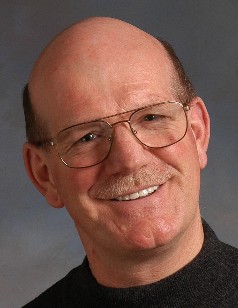




I’m beginning to feel like I’ve been adopted.
Professors Ch. and G. Vijayalakshmi have taken care of my every need at the university where I teach. Professor Ramamurti, Dr. Jamuna, Dr. Govinda Reddy, Dr. Lalitha—and Dr. Chenchulakshmi and Dr. Sudha, too—have welcomed me into their academic family at Sri Venkateswara University (SVU). SVU Students Subramanyam (Subbu) and Saritha Reddy have been especially kind.
Professor Ramamurti and his wife, Sudharta, along with Dr. Gunashekar and his wife, Dr. Jamuna, have taken me out to dinner a couple of times. Gunashekar and Jamuna also have invited me into their home to see in the New Year. A few days later I joined them for a lovely convivial evening shared with their daughter, Dipti. Saritha Reddy invited me to dinner at her home, too, and I talked about that in an earlier blog. Mr. John Joseph and his wife, Dr. Philomena Joseph, have been taking me back and forth to church on Sundays and have entertained me in their home, too. John also calls occasionally to check that I have everything I need.
There are many others I could add to this list. Let me take this opportunity to acknowledge my gratitude to one and all.
I never know when I get up in the morning what my agenda will be for the rest of the day. I’m getting used to going with the flow. Take yesterday, for example. I taught my class at 10:00 am. At 11:30 I went to SVU where Professor Ramamurti, Dr. Jamuna and Dr. Govinda Reddy helped me organize a travel schedule for my upcoming lecture tour of three universities in Karnataka State. At the end of the meeting, Jamunah asked me if I’d like to visit the Fort at Chandragiri that evening and take in the son et lumière show. I accepted her invitation. In the meantime, when I got back to the guesthouse after the meeting, Dr. Govinda Reddy dropped by to invite me to dinner at his home when I returned from Chandragiri.
In the early evening, Gunashekar, Jamunah and I, in a car driven by Professor Ramamurti's driver, Nagraj, travelled the 12 kilometers to Chandragiri, following the Tirupati to Chittoor highway. We spent some time wandering amongst the extensive ruins of what was once an elaborate fortified town on the banks of the Suvarna River, which curls sinuously around the Deccan Plateau. The walls and watch towers and gates were constructed over 1000 years ago using the solid granite of the Eastern Ghats, at the foot of the Seshachalam mountain range. There is an imposing, and well-preserved, 400 year old palace, too, now a museum.
As long ago as 1921, the whole upper and lower site of the Fort at Chandragiri became a national monument when it was transferred to the Archaeological Survey of India Department.
On our way home, we stopped not far from the Fort at an ancient Hindu temple, where I experienced the darshan of the Goddess Ellema.
The son et lumière show was a beautiful way to bring to life the history of the place, which included a 1639 visit to the court of the King of Chandragiri by representatives of the British East India Company, precursors of the British Raj. The agreement signed, and preserved in the museum, gave the Company—a front for exclusively British mercantile interests—the right to trade without any import or export taxes. I bet his majesty, King Charles I, was as pleased as Punch.
A few days later, Guna took me back to Chandragiri earlier in the day so that I could take a closer look at the fortifications in daylight amongst the rugged, barren, mountainous terrain. Then we spent a fascinating hour or so in the Raja Mahal Palace museum where Gunashekar impressed me with his knowledge of all the exhibits and his enthusiasm for the history of the Vijayanagara empire and the myths, legends, and beliefs of the Hindu faith.

No comments:
Post a Comment